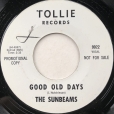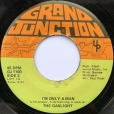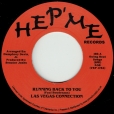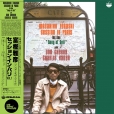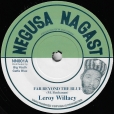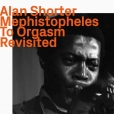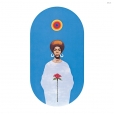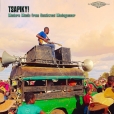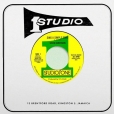Your basket is empty

“In the beginning of the pandemic we decided to take a turn and move to a small beach close to São Paulo, right in the middle of the rain forest… water definitely took a major role in our lives. We were living right in between the ocean and a waterfall, it´d rain for days on a roll sometimes and it was an open house where we had the sound of rain 360 degrees around us… I kinda think our music has a little of those different dynamics of water in its different states. Also, it might seem strange but São Paulo is a city in the water too, and it has a very chaotic relationship with it.”
‘The music itself is difficult to pin down: always kinetic and driven by fluid, nimble percussion, with a freeness to the sound overall, but also discipline, as the pair harness and channel the elemental force from which they’ve drawn their inspiration. At times the lines between Takara’s skittish percussion and Boregas’ idiosyncratic synth work and sound manipulation blur into flowing rivers or torrents of sound — here, both water and sound have the ability to awaken in us different memories, and emotional or physical states.
‘We could say say their sound contains clear influences from jazz, classic dub, krautrock, and the outer limits of post-punk. Contemporary allies include Holy Tongue, Shackleton, Oren Ambarchi…’
Both sides are knockout.
The Willacy is terrific roots, rough and mystical, compacted and bristling, with fine trumpet.
On the flip is Big Youth’s toast of Gregory’s Look Before You Leap.
‘With just four long, leisurely, percussion-drenched tracks, it’s a latin-jazz jam-band dream, with none other than Joe Henderson adding smoky tenor that ratchets up the intensity and mystery, and fusion avatars Stanley Clark and Lenny White super-charging the grooves. Think of it as a direct descendant of In A Silent Way, but with a lysergic twist and Miles’s tentative phrases replaced by Gasca’s brash, sassy blasts.’ (Jazzwise)
‘Wild ecstatic vocals, distorted electric guitars, rocket bass, and an amphetamine beat! Unlike anything else, this is THE high life music you’ve always wanted — ceremonial music played with abandon and extreme intent, honoring the living and dead alike.
‘In Toliara and its surrounding region, funerals, weddings, circumcisions and other rites of passage have been celebrated for decades in ceremonies called mandriampototse. During three and seven days, cigarettes, beer and toaky gasy (artisanal rum) are passed around while electric orchestras play on the same dirt floor as the dancing crowds and zebus. Locally and even nationally renowned bands play their own songs on makeshift instruments, blaring through patched-up amps and horn speakers hung in tamarind trees, projecting the music kilometers away. Lead guitarists and female lead singers are the central figures of tsapiky.
‘What results during these ceremonies is unclassifiable music of astonishing intensity and creativity, played by artists carving out their own path, indifferent to the standards of any other music industry: Malagasy, African or global.’
Thrilling, earthy twists on Ethio Jazz and co — born of authentic engagement and love — with a knockabout spirituality and body-rocking grooves, by this quintet led by Swedish saxophonist Lina Langendorf.
Gilles has been spinning it.
Check it out!
Ruggedly funky, tantalisingly rare do-over of Sly & The Family Stone, by Jackie Mittoo and the crew.
